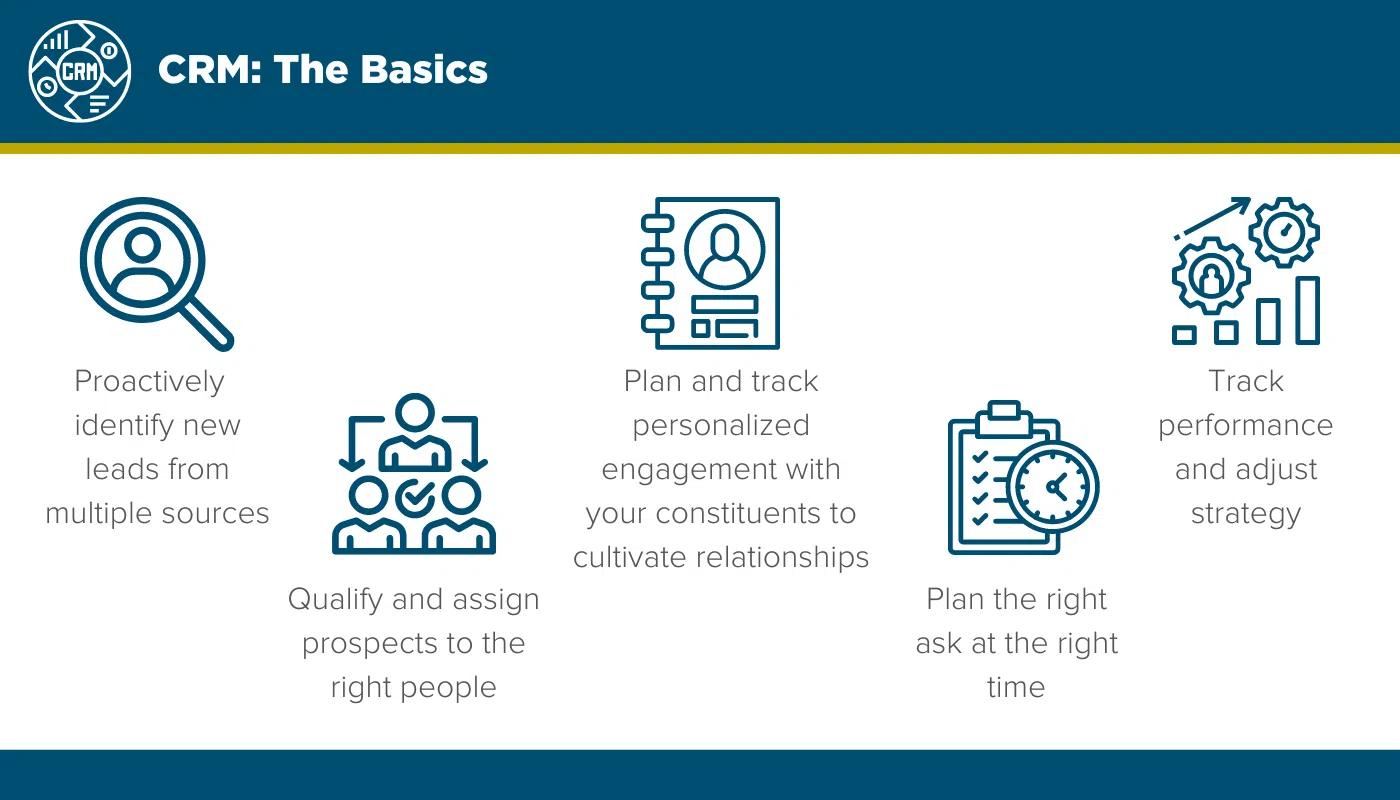How can you harness the power of your CRM to improve prospect management? Our friends at JCA shared their advice. In this article, they outline tools and techniques for creating a model that works—whether you are implementing a new CRM or optimizing your existing system.
The Basics
 Overall, your CRM system, data model, and processes should all work together to enable you to do the following:
Overall, your CRM system, data model, and processes should all work together to enable you to do the following:
- Proactively identify new leads from multiple sources
- Qualify and assign prospects to the right people
- Plan and track personalized engagement with your constituents to cultivate relationships
- Plan the right ask at the right time
- Track performance and adjust strategy
Building a Model
So, what do we mean when we talk about building a model? No matter what CRM software you use, your team will need to understand how to use it. This goes beyond software training; you need to create standards for coding, processes, and data entry. Consider the following components for your model:
- Policies and Procedures – Document policies and procedures to ensure that your data is consistently coded and usable. Plan your processes to make it easy for people to add the data that will feed your reporting.
- Individual Roles and Expectations – Communicate expectations clearly so that each staff member understands how their work impacts the success of the model. For example, hold gift officers accountable for consistently updating prospect activities and logging contact reports.
- Performance Goals and Metrics – Define metrics that measure the behaviors and activity to help inform strategic decisions. Common Key Performance Indicators (KPIs) include:
- Number of substantive contacts made
- Gifts received compared to amount asked
- Unique visits
- Days in each status
- Number of solicitations made (funded vs. declined)
- Portfolio “yield”
- Number of prospects qualified
- Unified Coding Schema – Ensure all staff are on the same page when applying codes to prospects and donors, such as prospect scores or categorizing prospect lifecycle stages. We recommend keeping coding simple by asking yourselves what really matters. For example, do you need separate prospect stages for “general cultivation” and “focused cultivation”? Will staff know when to use one versus the other? Will you manage each group of prospects differently? Involve frontline fundraisers to get their feedback about what’s important to them.
- Centralized Data – Make sure that you’re incorporating constituent data from other systems and origination points. Data about event ticket purchases and attendance, student admissions and activity, volunteer activity, etc., helps to provide the 360-degree view needed to build deeper relationships with your prospects.
- Reports and Dashboards – Maximize the native reports and dashboards available in your software. If these aren’t working for you, why not? It’s possible that the reports aren’t sophisticated enough for your model and your metrics, and you’ll need custom reports for certain insights. However, it is often the case that incorrect reports result from inconsistent data, so that’s worth exploring further.
Additionally, the right dashboards can automatically present the right data to each user. Rather than relying on reviewing a printed report of all donors in a gift officer’s portfolio, create dashboards for that gift officer that are actionable and dynamic, such as:
- Newly identified or classified prospects
- Prospects with no activity in X days
- Solicitations that are past due
- Upcoming activity reminders
Make it Work for Your Organization
Remember, prospect management models can be scaled for both small and large fundraising organizations. Although there can be some initial resistance to the increased transparency and accountability, these tools will help set clear expectations and result in higher performance.
• • •
 About the Author
About the Author
Kate Mead, PMP, is a Philanthropic Consultant at BWF, an international fundraising consulting and services company expert in complex philanthropy and the leading innovator in the field. Kate’s areas of specialty include system needs analysis, business process improvement, and overseeing large-scale CRM implementation projects. She has worked with a variety of nonprofits, with a special focus on Higher Education and Healthcare.



